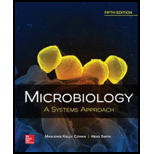
Concept explainers
Which of the following is/are not essential to carry out the polymerase chain reaction?
- a. primers
- b. DNA polymerase
- c. gel electrophoresis
- d. high temperature
Introduction:
PCR is a technique used to replicate and produce several copies of DNA. PCR has a wide application in research, medicine, agriculture, and many other fields.
Answer to Problem 1MCQ
Correct answer:
Gel electrophoresis is not essential to carry out polymerase chain reaction. Therefore, option (c) is correct.
Option (c) is given as “gel electrophoresis”.
Explanation of Solution
Justify reason for the correct statement:
PCR is a technique used to amplify DNA molecules. This technique involves three steps: denaturation, annealing, and extension. In denaturation, double stranded DNA is heated athigh temperature
After polymerase chain reaction, the resulted fragments are run into gel electrophoresis. Gel electrophoresis is used to separate DNA fragments according to the molecular weight. Thus, gel electrophoresis is not essential to carry out PCR.
Hence, option (c) is correct.
Justify reasons for the incorrect statements:
Option (a) is given as “primers”.
Primers are essential to carry out the polymerase chain reaction. Hence, it is a wrong answer.
Option (b) is given as “DNA polymerase”.
DNA polymerase is important to synthesize DNA fragment. Hence, it is a wrong answer.
Option (d) is given as “high temperature”.
High temperature is required for denaturation of DNA. Hence, it is a wrong answer.
Hence, options (a),(b), and(d) are incorrect.
Gel electrophoresis technique is used after the PCR reaction. Gel electrophoresis technique is used to separate the amplified DNA fragments.
Want to see more full solutions like this?
Chapter 10 Solutions
Microbiology: A Systems Approach
- In a small summary write down:arrow_forwardNot part of a graded assignment, from a past midtermarrow_forwardNoggin mutation: The mouse, one of the phenotypic consequences of Noggin mutationis mispatterning of the spinal cord, in the posterior region of the mouse embryo, suchthat in the hindlimb region the more ventral fates are lost, and the dorsal Pax3 domain isexpanded. (this experiment is not in the lectures).a. Hypothesis for why: What would be your hypothesis for why the ventral fatesare lost and dorsal fates expanded? Include in your answer the words notochord,BMP, SHH and either (or both of) surface ectoderm or lateral plate mesodermarrow_forward
- Essentials of Pharmacology for Health ProfessionsNursingISBN:9781305441620Author:WOODROWPublisher:Cengage
 Concepts of BiologyBiologyISBN:9781938168116Author:Samantha Fowler, Rebecca Roush, James WisePublisher:OpenStax College
Concepts of BiologyBiologyISBN:9781938168116Author:Samantha Fowler, Rebecca Roush, James WisePublisher:OpenStax College
 Human Heredity: Principles and Issues (MindTap Co...BiologyISBN:9781305251052Author:Michael CummingsPublisher:Cengage Learning
Human Heredity: Principles and Issues (MindTap Co...BiologyISBN:9781305251052Author:Michael CummingsPublisher:Cengage Learning Biology Today and Tomorrow without Physiology (Mi...BiologyISBN:9781305117396Author:Cecie Starr, Christine Evers, Lisa StarrPublisher:Cengage Learning
Biology Today and Tomorrow without Physiology (Mi...BiologyISBN:9781305117396Author:Cecie Starr, Christine Evers, Lisa StarrPublisher:Cengage Learning Biology: The Dynamic Science (MindTap Course List)BiologyISBN:9781305389892Author:Peter J. Russell, Paul E. Hertz, Beverly McMillanPublisher:Cengage Learning
Biology: The Dynamic Science (MindTap Course List)BiologyISBN:9781305389892Author:Peter J. Russell, Paul E. Hertz, Beverly McMillanPublisher:Cengage Learning





